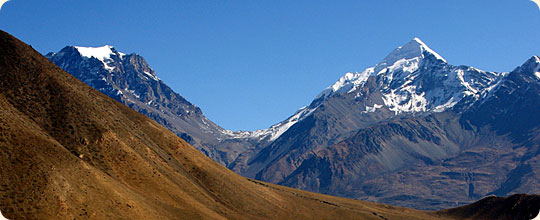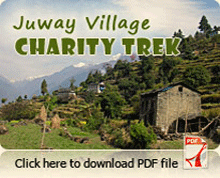

Altitude Mountain Sickness in Nepal
Good question! Going from close to sea level to anywhere above 2000mt. Our bodies are used to working at home. When we go higher they need to adapt. Altitude starts to have an effect around 1,500-2000m. The body starts to behave slightly differently as it tries to make up for the change in oxygen levels. Go up too fast to about 2,500m and altitude illness is common.Given enough time to adapt, most people can adjust to altitude between 5,000m (Everest base camp) and 5,500m few people can adjust any more. Health and ability then get worse. So what’s different about travel at altitude? The main difference is that as you go higher the air pressure gets lower (the air gets “thinner”), and this means for any single breath that you take there will be less oxygen for your body. Oxygen is needed to given you the energy to move, but is also needed simply to keep your body alive – for your brain and digestion to work, for healing cuts, and all those normal things your body does without you knowing about it. As your body gets less oxygen it adapts. You breathe faster and deeper. It makes more red cells to carry more oxygen in the blood. Changes take time to happen. If you go slowly you should stay healthy. Go up too fast and you risk suffering from altitude related illnesses, such as Acute Mountain Sickness (AMS)."
The Effects of Altitude:
Most people going high have to deal with altitude related illnesses. Dealt with correctly, they are unlikely to be a major problem. Dealt with incorrectly they can be disastrous – spoiling the trip for the person who is ill and those with them. Being honest about how you feel each day can make a difference, and knowing what’s happening to you could save your life. Some very strange things can happen to your body when you go high! Most people who have been to altitude can tell you about having headaches, being out of breath, sleeping badly and not feeling hungry. These are the symptoms of AMS. AMS is uncomfortable, not life threatening. If the AMS symptoms become severe and you keep going higher – fluid in the brain (High Altitude Cerebral Edema – HACE) or fluid in the lungs (High Altitude Pulmonary Edema – HAPE) can happen and these can kill you very quickly.
What people don’t know about is that you’ll need to pee more, your balance may become unsteady, your eye sight could change and your nails will grow differently.
Acclimatization:
When the body slowly adapts to lower oxygen levels the process is called acclimatization. Different people acclimatize at different speeds, so no rule works for everyone, but there are good guidelines. Over 3,000m go up slowly, sleeping no more that 300m higher at the end of each day. Going higher during the day is OK as long as you go down to sleep (“walk high – sleep down”). If you go up higher and can’t descend – take a rest day to allow your body time to ‘catch up’. This may seems very slow, and some people will comfortably be able to go up much faster, but in a group someone will always be the slowest to acclimatize and the timetable should be made to keep them healthy. A rest day scheduled after every 3 to 4 days will also help.
Driving of flying to high altitude means more people will suffer from AMS. It is really sensible to find out about the height of you planned route before you travel. Better still make a drawing to show the height that you will sleep at each night. If you don’t know – ask. There’s not better way to spot the days which are likely to cause altitude illness.
Acute Mountain Sickness (AMS)
- The common symptoms for AMS are:
- Headache
- Nausea (feeling sick)
- Vomiting (feeling sick)
- Fatigue (feeling tired)
- Poor appetite (not hungry)
- Dizziness
- Sleep disturbance
It’s good if everyone logs how they feel while traveling copy the sheet in the back of this booklet and is honest with others in the group. Everyone can help make decisions – to go up, to have a rest day or to go down. As a group, everyone’s health and happiness is equally important. Hiding illness or pushing someone on could be fatal. Some people just seem to acclimatize slowly, and need to take things more gently. If you are unfit, it doesn’t mean you are more likely to suffer, but overdoing it might be risky. If you are unused to exercise, feeling tired while trekking is surprising. Similarly if you are sleeping in a tent every night and are not used to it, your sleep may be poor. The food may also be different.
The most important thing is: are the symptoms getting better or worse?
If you think you are getting worse – walk down (at least 500 to 1,000m lower for sleeping). Give your body extra time to acclimatize. Don’t leave this decision until it’s too late. The drug acetazolamide (trade name Diamox) can be used to reduce the effects of AMS, useful where large height gains are unavoidable. It does have side effects, and some people can be allergic to it.
High Altitude Cerebral Edema (HACE): The main symptoms:
Severe headache
Become clumsy
Act differently – unhelpful, violent,lazy
May have bad, non-stop vomiting
Blurred vision
See, hear, feel, smell odd things
Confused
Reduced consciousness
What to do?
Stay with the person at all times – do not leave them on their own
Descend now – later or in the morning
Sit them upright and keep warm
Give oxygen via cylinder or pressure bad if you have it
Give dexamethasone if you have it
Give acetazolomide if you have it
If really unable to descent – prolonged use of a pressure bad may be needed
High Altitude Pulmonary Edema (HAPE):
The main symptoms:
Trouble breathing
Tired & weary
Coughing
Froth and later blood in spit
Lips, tongue, nails become blue
HAPE can develop in 1-2 hours or over several days and even when descending
What to do?
Stay with the person at all times – do not leave them on their own
Descend now –not later or in the morning
Sit them upright and keep warm
Give oxygen via cylinder or pressure bad if you have it
Give nifedipine if you have it
Give acetazolomide if you have it
If really unable to descent – prolonged use of a pressure bad may be needed
Some Tips on Altitude Medicines:
Problem |
Drug |
Dose |
AMS |
Peracetamol |
500mg tablets, 2 tablets 4 times a day |
Headache |
and / or ibuprofen |
400mg tablets, 1 tablet 3 times a day |
AMS |
Metoclopramide |
10mg tablets up to 3 times a day |
Nausea |
or Prochlorperazine |
1 to 2*5mg tablets up to 3 times a day |
AMS prevention |
Acetazolamide |
Half a 250mg tablet a twice a day, |
HACE |
Oxygen gas |
Breathed continuously - |
|
Dexamethasone- |
8-16mg a day in divided doses, |
|
Acetazolamide |
250mg tablet, 1 tablet 3 times a day |
HAPE |
Oxygen gas |
Breathed continuously - |
|
Nifedipine |
20mg MR tablet 2 times a day |
|
Acetazolamide |
250mg tablet, 1 tablet 3 times a day |
Diarrhoea |
Ciprofloxacin |
750mg 2 times a day |
|
or Azithromycin |
Capsules taken daily for 3 days |
|
Loperamide |
2mg capsules take-up to 8 times |
Dehydration |
Electrolyte rehydration solution |
in 200ml of boiled and cooled water |
Infections |
Amoxycillin |
250mg 3 times a day for the least 5 days |
|
and / or Metronidazole |
200mg 4 times per day or as |
Cough |
Pholcodine |
Linctus 10ml up to 4 times a day |
Sore Throat |
Lozenges with anaesthetic |
i.e. Benzocaine |
Dry chapped lips and skin |
Lip balm & sunscreen |
with at least SPF 15 - skin section |
Blocked nose |
Pseudoephedrine |
60mg 3 times a day |
|
or / Xylometazoline |
Nasal spray |
Cold sores |
Aciclovir |
5% cream - 5 times a day for 5 days |







